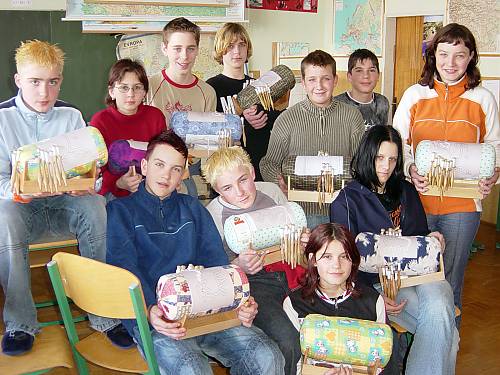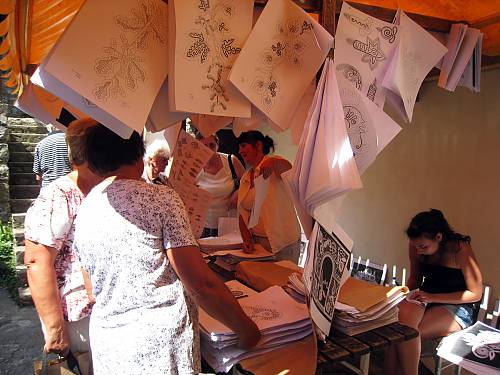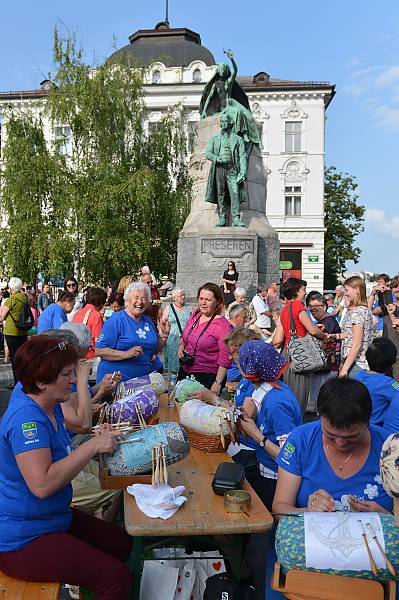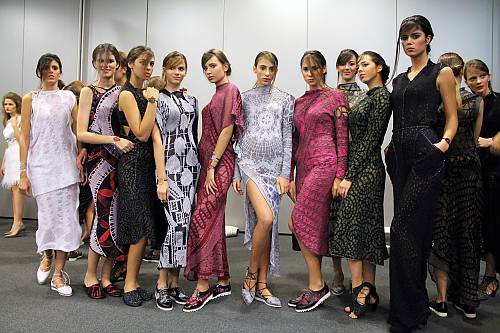Bobbin lacemaking in Slovenia
Inscribed in 2018 (13.COM) on the Representative List of the Intangible Cultural Heritage of Humanity
 © B.Dovečer/Ž.Emeršič/A.Hefferle/ M.Lapajne/A.Otovčević/M.Pevec/ T.Prinčič/N.Valentinčič Furlan/B.Zrinšek
© B.Dovečer/Ž.Emeršič/A.Hefferle/ M.Lapajne/A.Otovčević/M.Pevec/ T.Prinčič/N.Valentinčič Furlan/B.Zrinšek Bobbin lacemaking in Slovenia is a handicraft skill of making lace by crossing and twisting thread wound on special wooden sticks known as bobbins. Using locally recognizable patterns with local names, bobbin lacemakers make lace in bands or in finished shapes. The bobbin lacemaking process follows a specific pattern: a drawing on paper is attached to a cylinder pillow in a wicker basket or on a wooden base. The lace is used to adorn clothing and fashion accessories, church and home textiles and representative spaces, but bobbin lacemaking also serves as an inspiration for artistic creations in fields such as the contemporary visual arts, design, architecture and culinary design. It is the creative expression of all those involved in the process, including the pattern designer and the bobbin lacemaker. Bobbin lacemaking has notable therapeutic functions, and is an ecologically clean and sustainability-oriented activity. There are around 120 bobbin lacemaking societies, sections and groups in Slovenia today, which include trained bobbin lacemakers and those who are still learning. Bearers mostly comprise women, and the knowledge and skills related to the practice are most frequently passed down from grandmothers to grandchildren: the socializing of female bobbin lacemakers in neighbourhood communities is also key for transmitting related knowledge and skills.









